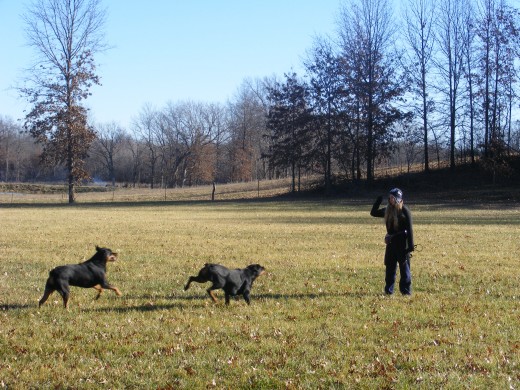Cross Over Trainers: Compulsion to Reward-Based Training
Reap the rewards of reward-based training!

Making the Change is Really Easy!
A vast array of training methods appear to constellate the world of dog training, but more and more dog trainers and owners are embracing reward-based training methods. Positive reinforcement trainers find that a training approach based on rewards helps dogs build trust in the owner rather than living in fear of being punished for making the wrong choices, explains dog trainer Pat Miller, owner of Peaceable Paws in Fairplay, Maryland. The shift from compulsion training to a reward-based training is not a difficult process; many dog owners indeed are reaping the many rewards derived from using such method.
A Guide to Better Training
How to Switch From Compulsion To Reward Based
One of my training colleagues just recently posted a comment on his Facebook page about a client being sent to him after three other trainers suggested electronic collars and other outdated training methods such as alpha rolls and neck scruffs. These are methods of many decades ago! We know better now! Luckily, my colleague was able to help this client out and told the dog owner to toss out the prong collar and learn better, scientifically approved training methods! If you are looking for a trainer, beware of trainers immediately suggesting electronic collars and other old dominant-based training methods!
- New Principles
The first step into shifting to a reward-based training method would require compliance with different principles when it comes to operant conditioning. The use of positive punishment would need to be replaced with positive reinforcement. Instead of creating an undesirable consequence to the dog for undesirable behavior, you will need to provide instead a desirable consequence for desired behavior. For example, instead of giving a leash correction when your dog pulls on the leash, you would reward your dog for walking next to you on a loose leash instead.
- New Tools
Because reward-based trainers rarely, if ever, use corrections, the use of training tools crafted for the purpose of causing discomfort or pain are not commonly used. The use of aversion-based tools such as choke chain collars, prong collars and electronic collars ultimately defeat the purpose of reward-based training which is to reward the good and ignore the bad. While it is true that any training collar in the wrong hands can be misused, there are many better training tools suitable for kinder training methods.
- New Techniques
Reward-based training encompasses different training techniques. For instance, instead of physically manipulated your dog into a sit by applying pressure on his bottom, you can try lure-reward training. To teach the sit using this technique, you would place a treat in front of your dog's nose moving it backwards over his head. As the dog follows the treat, he should assume the desired position, according to the Association of Professional Dog Trainers. Another reward-based method is marker training, where a sound or word is used to signal the moment a dog engages in a correct behavior. The signal is immediately followed by a reward so to reinforce the desired behavior.
- New Guidelines
Often, compulsion trainers are intimidated by reward-based training because they are afraid they will be stuck giving treats for the rest of the dog's life. While it is true a dog can be trained without food, food is for many dogs the most salient reward possible, explains Valarie V. Tynes a Diplomate of the American College of Veterinary Behaviorists and owner Premier Veterinary Behavior Consulting in Sweetwater, Texas. Reward-based training does not require treats all the time; rather, once a behavior is learned, a good trainer will switch to an intermittent schedule of reinforcement which entails only giving the treats periodically.
- New Results
Training based on cooperation and kindness rather than forced submission and fear, yields a deep connection between dog and owner that increases trust and builds a better bond. A positive training experience lowers the chances for behavioral problems, whereas, punishment or confrontational techniques may worsen existing problems, leading to a more fearful or aggressive dog, explains Gary Landsberg, a veterinary behaviorist at the North Toronto Animal Clinic, Thornhill, Ont., Canada.Expect to see a happier dog that ultimately works for you for pleasure rather than fear.
All rights reserved. Note: copied content subject to DMCA reporting.
How do you train your dogs?
For further reading
- Dog Training: Understanding Poisoned Cues
Learn about poisoned cues and how to deal with them before they start becoming a problem. Tips and strategies to get your obedient dog back on track. - Secret Strategies for Potty Training your Puppy
Learn effective strategies for potty training your puppy. How to potty train your puppy faster and more effectively. - High Value Training Treats For Dogs
Motivation is ultimately the internal engine that gets your dog going, but you cannot have motivation without having a strong reward. If you want to makes this equation work for you during your dog's training session, you want to do some homework on. - How to Train Your Scent Hound Dog to Come When Calle...
Learn effective strategies to polish your recall command with your scent hound. Also, understand why training these types of dogs can get so challenging at times!








